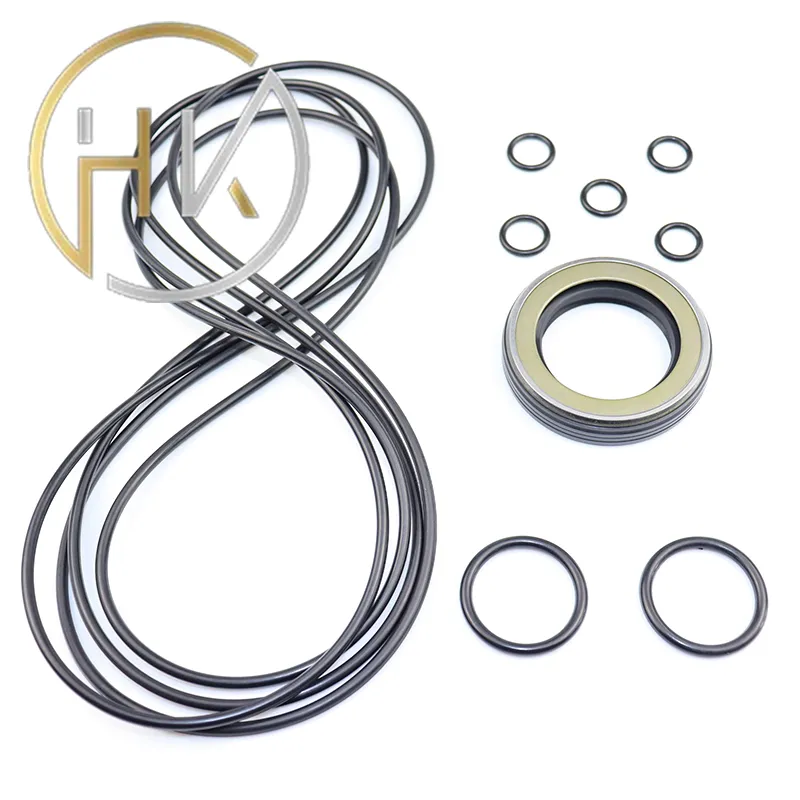Oct . 01, 2024 05:01 Back to list
Understanding the Function and Importance of Cylinder Oil Seals in Engine Performance
Understanding Cylinder Oil Seals Importance, Function, and Maintenance
In various mechanical systems, the integrity of components is critical to ensure efficiency and longevity. One such component that plays a vital role is the cylinder oil seal. This often-overlooked part is essential for maintaining the operational health of engines and machinery, particularly in automotive and heavy equipment applications. In this article, we will explore what cylinder oil seals are, their functions, materials, installation, and maintenance tips to ensure optimal performance.
What is a Cylinder Oil Seal?
A cylinder oil seal, also known as a crankshaft or camshaft seal, is a mechanical component made typically from elastomeric materials. It is designed to prevent the leakage of oil and to keep dirt and contaminants out of the internal components of an engine. Positioned between the rotating shaft and the housing, the oil seal maintains a sealed environment, essential for the proper functioning of various engine elements.
The Functions of Cylinder Oil Seals
The primary function of cylinder oil seals is to retain oil, thereby preventing it from leaking out of the engine. This is critical for lubricating the moving parts, reducing friction, and ensuring smooth operation. Oil seals also prevent external contaminants such as dust and dirt from entering the engine, which could lead to wear and damage over time.
In addition, cylinder oil seals help maintain pressure within the system. By creating a tight seal around the shaft, they facilitate the smooth operation of components like pistons and crankshafts. This is especially significant in high-performance engines, where precise control of oil circulation is necessary for achieving optimal performance.
Materials Used in Cylinder Oil Seals
The materials used for manufacturing cylinder oil seals are crucial for their functionality and durability. Most commonly, they are made from rubber, such as nitrile, fluorocarbon, or silicone, each offering distinct advantages.
- Nitrile Rubber (NBR) Known for its excellent resistance to oil, fuel, and heat, nitrile rubber is commonly used in oil seals for general automotive applications.
- Fluorocarbon (FKM) This material is used in high-temperature applications due to its superior heat resistance and chemical stability, making it suitable for more demanding environments.
- Silicone Offering excellent resistance to extreme temperatures and environmental factors, silicone rubber is sometimes used in oil seals, particularly in areas subject to high temperature and pressure variations.
Installation of Cylinder Oil Seals
Proper installation of cylinder oil seals is essential to ensure they function as intended. Here are some important steps and considerations
cylinder oil seal

1. Preparation Before installation, clean the area where the seal will be placed. Any debris, old seal remnants, or oil can hinder the effectiveness of the new seal.
2. Lubrication Apply a thin layer of clean oil to the lip of the new oil seal. This helps to ease the installation and ensures a good initial seal.
3. Alignment Position the seal carefully to avoid damaging the lip during installation. Use a proper tool, such as a seal driver, to ensure even compression.
4. Seating Tap the seal gently but securely until it is flush with the housing. Avoid excessive force that could damage the seal.
5. Visual Inspection After installation, visually inspect the seal to ensure it is properly seated and not pinched or twisted.
Maintenance Tips for Cylinder Oil Seals
To extend the life of cylinder oil seals and enhance their performance, regular maintenance is necessary
1. Regular Inspections Conduct routine checks for leaks or signs of wear. Early detection can prevent significant damage to the engine.
2. Oil Quality Use high-quality oil that meets the specifications required for the engine. Contaminated or low-quality oil can lead to premature seal failure.
3. Temperature Management Monitor the operating temperature of the engine. Excessive heat can lead to the deterioration of oil seals. Ensure the cooling system is functioning optimally.
4. Prompt Replacements If you notice any leaks or decreased engine performance, consider replacing the oil seals promptly. Delay could lead to larger issues.
Conclusion
Understanding the importance of cylinder oil seals highlights their critical role in maintaining the efficiency and longevity of engines and machinery. With the right materials, proper installation practices, and ongoing maintenance, users can ensure that their oil seals perform effectively, safeguarding their mechanical systems against leaks and contaminants. By taking these steps, operators can extend the life of their equipment and enhance overall performance.
-
Unlocking the Potential of Hydraulic Systems with Essential Sealing Solutions
NewsAug.06,2025
-
Unleash the Power of Your Hydraulic Systems with Our Premium Seal Kits
NewsAug.06,2025
-
Specialized Hydraulic Seal Kits for Breakers, Pistons, and Presses
NewsAug.06,2025
-
Revitalize Hydraulic Systems with Premium Repair and Seal Kits
NewsAug.06,2025
-
Fortify Your Cylinders with Premium Sealing Solutions
NewsAug.06,2025
-
Elevate Hydraulic System Reliability with Specialized Seal Kits
NewsAug.06,2025
-
TCN Oil Seal Metal Ring Reinforcement for Heavy Machinery
NewsJul.25,2025
Products categories
















